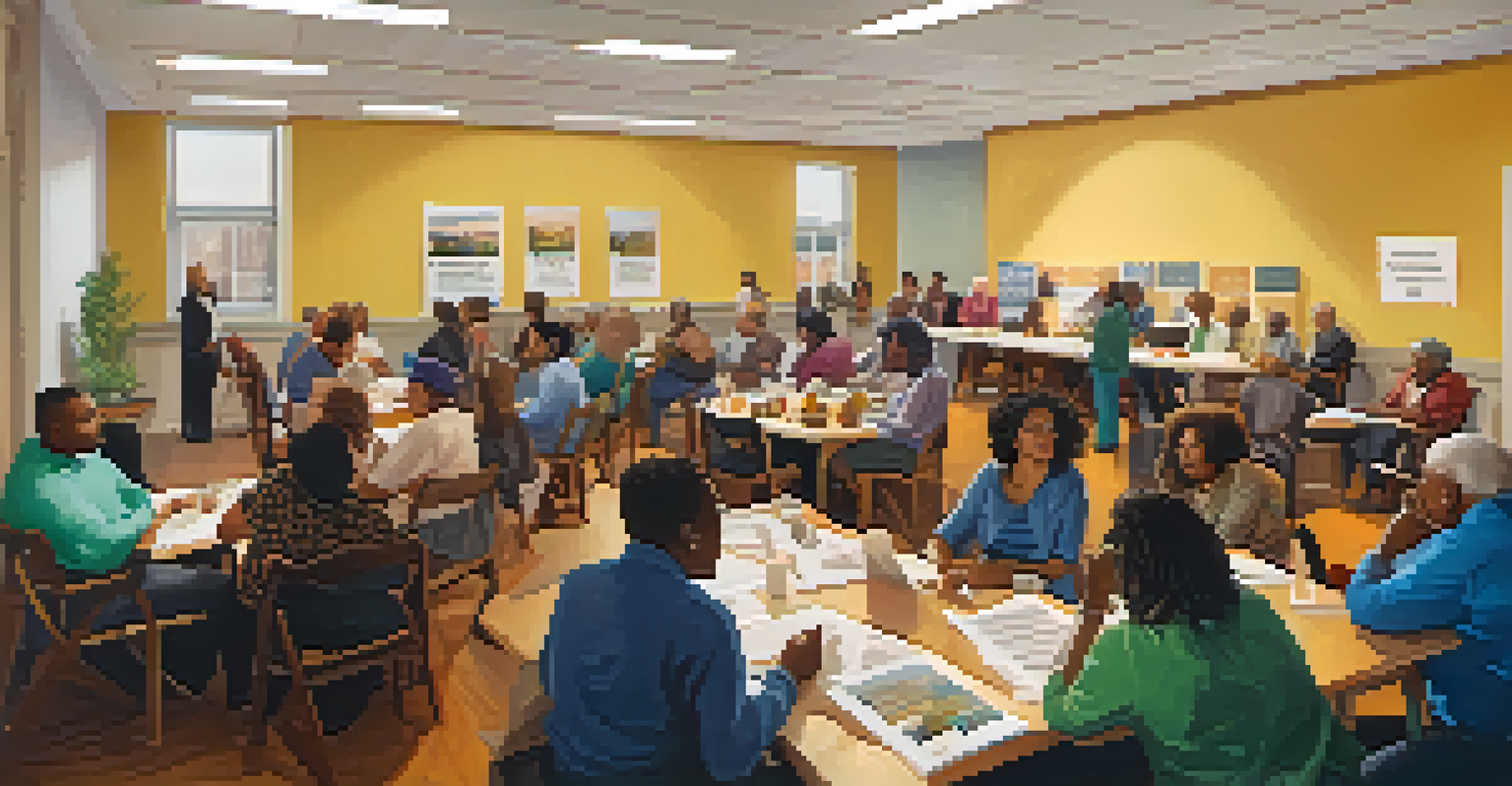San Jose's Affordable Housing Crisis: Current Statistics

Overview of San Jose's Affordable Housing Crisis
San Jose, known for its innovation and tech industry, is facing a significant affordable housing crisis. The city has seen a rapid increase in housing costs, leaving many residents struggling to find affordable options. This crisis is not just a local issue; it reflects broader trends across the Bay Area and beyond.
Housing is a basic human need, and everyone deserves a safe and affordable place to live.
In recent years, the demand for housing has surged, driven by an influx of tech workers and a limited supply of new homes. As a result, rental prices have skyrocketed, making it increasingly difficult for low- and middle-income families to afford a place to live. This situation has led to a rise in homelessness and housing instability.
Understanding the current statistics is crucial to grasp the severity of the crisis. With over 50% of residents spending more than 30% of their income on housing, the financial strain is evident. Without proactive measures, the crisis will only worsen, affecting the community's fabric.
Current Housing Market Statistics in San Jose
As of 2023, the median home price in San Jose has reached approximately $1.4 million. This staggering figure highlights the gap between income levels and housing costs, making homeownership a distant dream for many. Meanwhile, rental prices have also seen an upward trend, with the average rent for a one-bedroom apartment nearing $3,000.

To put these numbers into perspective, a household earning the median income of around $120,000 would still find it challenging to afford the high costs of living. This situation necessitates that families allocate a significant portion of their budget to housing, leaving less for essential needs such as food and healthcare.
San Jose's Housing Crisis Deepens
The city faces a significant affordable housing crisis, with skyrocketing costs forcing many residents into instability.
Furthermore, vacancy rates in the city remain low, often below 5%, indicating a tight housing market. This scarcity exacerbates competition for available units, driving prices even higher, and highlighting the urgent need for affordable housing solutions.
Demographics Affected by the Housing Crisis
The affordable housing crisis in San Jose disproportionately impacts low-income families and marginalized communities. Many individuals and families from these groups are often forced to move further away from their jobs, leading to longer commutes and increased transportation costs. This not only affects their quality of life but also contributes to a cycle of poverty.
The greatest challenge of our time is to ensure that everyone has access to affordable housing.
Moreover, the crisis affects various demographics, including seniors, single-parent households, and essential workers. These groups often earn modest incomes but face the highest housing costs, making it difficult to maintain stability. The challenge is further compounded by rising living expenses and stagnant wages.
The lack of affordable housing options can result in overcrowding and unsafe living conditions. Many families are pushed into substandard housing or fall into homelessness, highlighting the urgent need for comprehensive policy solutions that address the root causes of the crisis.
Impact of COVID-19 on Housing Affordability
The COVID-19 pandemic has significantly reshaped the housing landscape in San Jose. Initially, there was a temporary dip in rental prices as many residents faced job losses and uncertainty. However, as the economy began to recover, demand surged, and prices rebounded even faster than before, exacerbating the existing crisis.
Many renters found themselves in precarious situations, with eviction moratoriums providing only temporary relief. As these protections began to expire, the fear of displacement became a reality for many low-income residents. This cycle of instability has lasting implications for community cohesion and individual well-being.
Impact on Vulnerable Populations
Low-income families and marginalized communities are disproportionately affected, facing long commutes and substandard living conditions.
Additionally, the pandemic highlighted the importance of stable housing as a foundation for public health. With the ongoing challenges of remote work and online education, access to affordable housing has never been more critical for supporting families and ensuring their success.
Local Government Initiatives to Address the Crisis
In response to the housing crisis, the San Jose city government has launched several initiatives aimed at increasing affordable housing stock. Programs such as the Affordable Housing Impact Fee require developers to contribute to affordable housing projects, ensuring that new developments benefit the community. This approach seeks to create a more equitable housing landscape.
Furthermore, the city has been working to streamline the permitting process for new housing developments. By making it easier for projects to get approved, the hope is to accelerate the construction of affordable homes and reduce the time it takes to bring much-needed housing to the market.
However, these initiatives face challenges, including community resistance and funding limitations. Balancing the need for development with the concerns of existing residents is crucial for ensuring that future projects are met with support rather than opposition.
Role of Nonprofits and Community Organizations
Nonprofit organizations and community groups play a vital role in addressing San Jose's affordable housing crisis. These organizations provide essential services, such as housing counseling, legal assistance, and financial literacy programs, helping residents navigate the complex housing landscape. Their work is crucial in empowering individuals to secure stable housing.
Many nonprofits are also involved in advocacy efforts, pushing for policy changes at the local and state levels. By raising awareness about the housing crisis and its impacts, these organizations seek to influence decision-makers to prioritize affordable housing solutions. Their grassroots approach helps ensure that the voices of those affected are heard.
Need for Collaborative Solutions
Addressing the crisis requires a multifaceted approach involving government, nonprofits, and community input to create sustainable housing options.
Additionally, community organizations often collaborate with local governments and developers to create innovative housing solutions. By fostering partnerships, they can leverage resources and expertise to develop projects that meet the needs of the community, making a meaningful impact on the housing crisis.
Looking Ahead: Solutions for Affordable Housing
Addressing the affordable housing crisis in San Jose requires a multifaceted approach. Solutions must include increasing the supply of affordable homes, enhancing tenant protections, and ensuring equitable access to housing resources. It’s essential to involve a range of stakeholders, including government, nonprofits, and the community, to create sustainable solutions.
Innovative strategies, like community land trusts and inclusionary zoning, can help increase affordable housing options. These approaches allow communities to retain control over land and housing, ensuring that future developments prioritize affordability. By thinking outside the box, San Jose can create a more inclusive housing market.

Ultimately, the goal is to create a balanced housing ecosystem where all residents can thrive. By addressing the root causes of the crisis and implementing effective policies, San Jose can work towards a future where affordable housing is accessible to everyone.